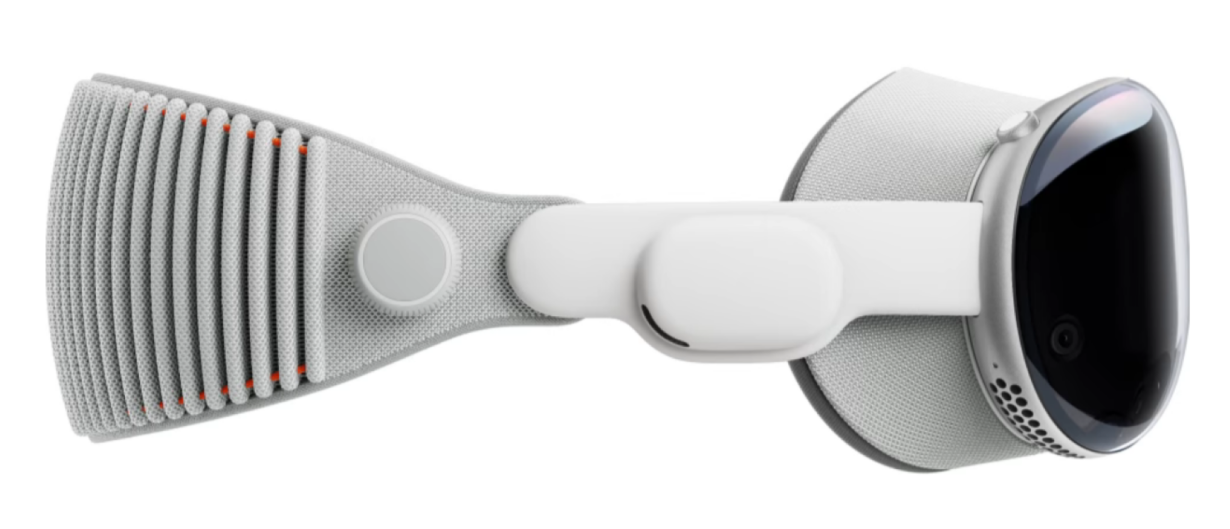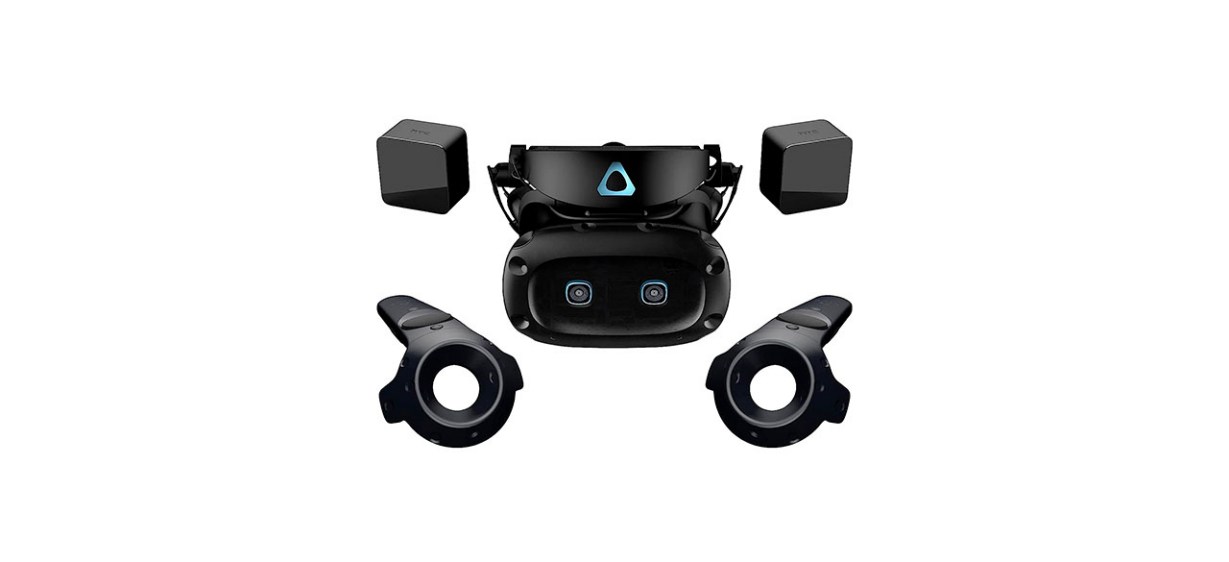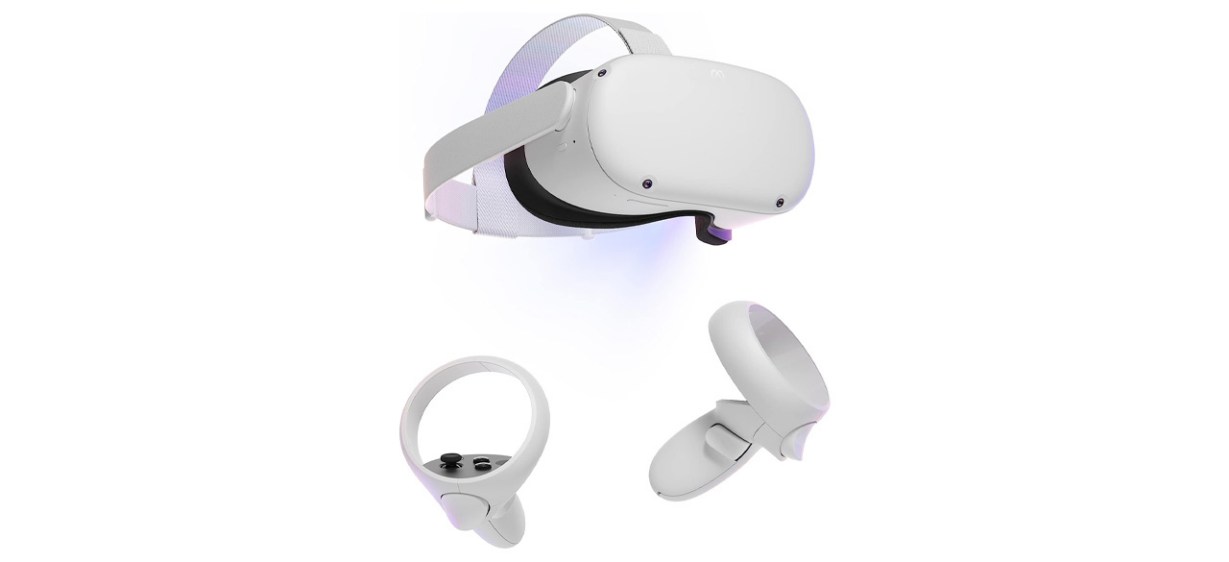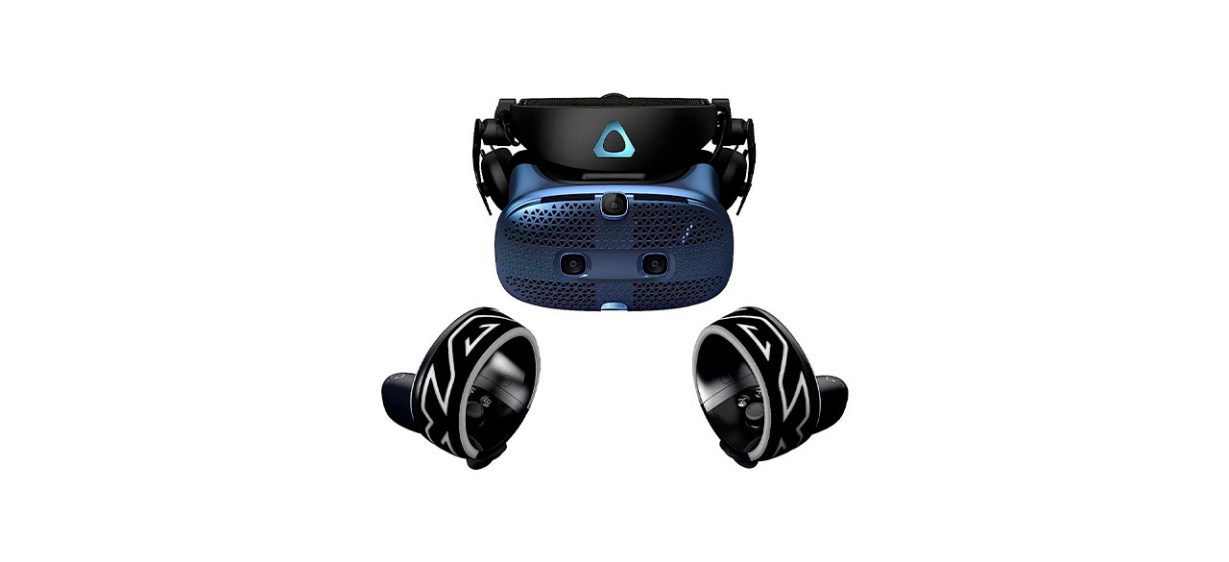Virtual reality has been around for almost a decade, but it’s only in the last three or four years that the technology has advanced enough to make it nearly indistinguishable from real life.
That might seem like an exaggeration, but as soon as you strap on a VR headset and come face-to-face with a zombie horde, it’s hard to believe it’s not real. The headset, which often has adjustable straps for comfort and is compatible with eyeglasses, uses complex technology to project images to each eye independently. And with head-tracking hardware, your vision changes when you turn your head, literally placing you in the middle of the video game action.
After testing and researching VR headsets, we think the HTC Vive Pro 2 is the very best for its unmatched immersive experience. If you’re new to VR and not sure you want to invest too much, we found the Meta Quest 2 to be an affordable option that’s easy to use and a lot of fun.
Expert Tip
Avoid used or refurbished VR equipment. Virtual Reality setups all have moving parts, and there’s no way to know which parts are worn out, or what (if any) repairs have been performed.
Best VR headsets

Apple Vision Pro
Released on February 2, Apple’s new augmented reality (AR) headset was highly anticipated by our team. Specifically designed for “spatial computing”, the Apple Vision Pro allows you to arrange your apps any way you please in the space around you—without taking away your view of reality.
Apple’s Vision Pro is advertised in three storage sizes: 256 GB, 512 GB and 1 TB. It features a Light Seal designed to block out light, making the headset immersive, while the Solo Knit Band is stretchy and cushioned to also make it comfortable. You’ll have to experience it to believe it!
The Vision Pro is available now on Apple.com.

HTC Vive Cosmos Elite
HTC’s virtual reality headsets were some of the first to be commercially successful, giving the company an excellent footing for further product development. We love this headset’s visual clarity and overall immersive experience, making it ideal for gaming, social experiences like VRChat and using creative apps (though you do need a powerful PC to get the most out of it).
The headset’s LCD display has a maximum resolution of 2880 x 1700 pixels per eye, bringing 4K content up close and personal to easily make you believe you are in a different world. It also has a refresh rate of 120 hertz, which is much faster than a regular computer monitor, eliminating stutters and visual lag.
For sound, the headset comes with removable high-resolution-certified headphones as well as support for high-impedance headphones through a USB-C analog signal. As you would expect, it uses G-sensors, gyroscopes, proximity and IPD sensors and works with SteamVR Tracking V2.0.

Meta Quest 2
You might know the Quest as an Oculus product, but after Facebook’s parent company Meta acquired it, it changed the branding of the VR products. That’s great for consumers, as we found the Quest 2 to be a marked improvement over the original in our testing process. While most will use it with a desktop computer, the Quest 2 also works with just a mobile phone, making it highly portable. It features a maximum resolution of 1832 pixels by 1920 pixels per eye and has a variable refresh rate of 60, 72 or 90 hertz.
It has 3D positional speakers built into the headset, but there is a 3.5-millimeter jack if you want to use your own. Apps and games are bought through the Meta Quest Store. It might not have the highest resolution display, but it’s a cinch to set up and is more affordable than others, making it a perfect entry point into VR.

Meta Quest Pro
Almost three times the price of the Quest 2, the Pro version of Meta’s Quest is packed with amazing technology and is its most advanced VR headset. It comes with two wireless controllers, and the headset itself is ultra-sleek with a glossy black finish. It has two LCD panels inside with a maximum resolution of 1800 by 1920 pixels per eye. But while that isn’t as much as others, the trick lies in the technology that controls 500 individual LED blocks independently for more contrast, sharpness and a larger color gamut. To see everything perfectly around you, the headset gives you a 106-degree horizontal and 96-degree vertical field of view. And if you want to use the Quest Pro in the Metaverse, the headset will accurately convey your facial expressions as there are five cameras inside for real-time expression tracking.

HTC Vive Cosmos
This VR headset has six tracking cameras and doesn’t require any base stations. Right out of the box, you’ll get accurate inside-out tracking and expansive movement coverage for an immersive experience. It’s compatible with various systems and computer configurations, and the portable design lets you take it on the go.
The display renders a 2880 by 1700 pixel resolution and a fluid 90-hertz refresh rate for a smooth, lag-free experience, and it has a traditional flip-up display and removable on-ear headphones. Plus, you’ll get a code for Viveport Infinity that offers two months of unlimited VR play of over 700 games.
Advertisement

HP Reverb G2 V2 Headset
HP’s VR offering is a perfect gadget if you want to immerse yourself in computer games. During testing, we loved that the LCD display has a maximum resolution of 2160 by 2160 pixels per eye, which can render stunning visuals in the adjustable facemask. The built-in speakers were designed by the gaming studio Valve, so its audio is crystal clear. Unlike some other VR headsets, the Reverb G2 doesn’t require external sensors and has four cameras on the headset to track your position and the controllers. It’s also one of the few VR headsets that give you access to an enormous library of games, as it is compatible with SteamVR and Windows Mixed Reality.
How we tested
After researching the top VR headsets on the market, we tested the HTC Vive Cosmos Elite, Meta Quest 2 and HP Reverb G2 V2 to see how well they did in the following areas:
Ease of use
- Setup: We took note of how complex the unboxing of the VR headsets was, what is needed to set up and calibrate each system and how quickly you can jump into a game.
- Wireless controller: The wireless controllers are an essential piece of any VR headset. We tested how well they respond to movements and how comfortable they are when held.
- Interface: There is no mouse and keyboard for a VR headset, and all the actions are executed with the wireless controllers. We looked at how easy it is to navigate the menus and enable on-screen action.
Quality
- Visual quality: The display inside the headset is crucial, so comparing each headset’s maximum resolution, we evaluated the visual quality, refresh rate, color gamut and clarity.
- Content: Any VR headset must be connected to a mobile phone or computer to access VR-compatible content. We look at which stores or marketplaces each one requires, how many titles are available and the average cost of each game.
Advanced features
- Sound: Visual immersion is crucial, but so is the audio quality. We looked at which VR headsets had built-in speakers to evaluate the sound and which models were compatible with your existing headphones.
- Infrared tracking cameras: The headset must know where you are in relation to the world, and this is done through IR cameras on the outside. We measured the accuracy of these cameras to see how well they respond to directional movement.
Expert TIp
Do a few quick tests to make sure you can hear the real world around you. Being immersed in VR is great, but it’s still important to be able to hear things like sirens, alarms, or loved ones who need your attention. Make sure that you’re still able to hear important sounds around you while you play so you don’t miss anything urgent.
What to know before buying a VR headset
Virtually go to a different reality
The most significant drawcard for virtual reality headsets is that they allow you to experience things you would never have been able to. From scaling the highest mountains and exploring the vast wilderness to taking on a zombie horde or creating stunning 3D art, virtual reality places you in the middle of the action — without leaving your living room.
- First-person action games are one of the most popular categories for VR entertainment. Depending on the game, you can go from a fast-paced rally driver to a military contractor and then an airplane pilot in one afternoon. Oh, and don’t forget to set some time aside to save the world from up-close monsters and mayhem.
- Crafting apps, including the ultra-popular Minecraft, have been so successful on VR platforms they’ve become their own category. Whether you’re into casually building your own virtual empire or designing objects that can be 3D-printed in the real world, there’s a VR app for that.
- Virtual tours allow you to browse locations from all over the world throughout history. You can stroll through Ancient Rome, downtown New York City or even visit your favorite museum without paying the admission fee.
- Multi-device co-op games take on a new twist with a VR headset. In these games, the player with the headset must use what they see and work with other players using their own devices. Classics like “Keep Talking and Nobody Explodes” are great for parties or gatherings — just so long as everyone gets a turn!
Tethering might be required
Unlike some virtual reality headsets that work by slotting a mobile phone into them, authentic VR headsets need external devices, such as a powerful PC to do the heavy lifting in sending the images to the wearer. That means there will often be cables and wires that can get in the way if you aren’t careful.
Before buying a VR headset, consider which type is right for you regarding your budget, what you want to access and how much room you have available if you need to move around.
- A smartphone-enabled VR headset like Google Cardboard is the most affordable option, as you only need a compatible mobile device that slips into it. You can even make one yourself. Keep in mind that some gadgets only work with specific mobile phone models, and you must download compatible apps and games to view the content.
- On the other hand, authentic VR headsets are either wired or wireless. They connect to a computer or a gaming console that runs the software and then send the visual signals to the headset. They provide the best visuals and overall experience but are considerably more expensive.
Virtual comfort
The technical features of a VR headset are important, but equally so is the comfort. A headset might have amazing visuals, but if it’s cumbersome and difficult to wear comfortably, it won’t be much fun after a while.
One of the key factors in a VR headset is the comfort of the headset strap material. This is the part inside the headset that rests on your head and is responsible for a significant part of how it feels when worn.
- Fabric straps are generally more elastic and typically more comfortable overall. However, fabric straps will absorb sweat over time and can be a challenge to clean.
- Plastic, rubberized straps are more durable and simple to clean. Many VR headsets with plastic straps have extra comfort features, like padding near the forehead area.
Expert Tip
If you’re just getting started, get a friend to show you around. Virtual reality is literally boundless, so it helps to have a guide your first few times! Get them to show you their favorite locations and activities!
Tips for using a VR headset
- If you’re showing virtual reality to a friend, give them plenty of physical space if it’s their first time. Most first-time users move around quite a bit as they get used to VR, so keep anything fragile out of their path.
- Before starting a VR session, learn what each button on the controller does. Most VR headsets include one or more hand-held controllers for navigating virtual environments.
- Virtual reality sickness can be very real: Some people get symptoms of motion sickness while using VR headsets, even when there is no motion. If you experience these symptoms while using a VR headset, discontinue use immediately and consult a physician.
- Before buying a wireless VR headset, confirm that your phone is supported. Some wireless VR headset phone units are meant to work only with specific smartphone models.
- Periodically clean or deodorize any soft, padded parts of your headset to keep them smelling fresh.
- Most VR headsets don’t come with protective cases. Pick up a protective case for all your VR gear to keep your investment safe and ensure enjoyment for years to come.
FAQ
Q. How much do VR headsets cost?
A. Pricing for virtual reality headsets can be tricky because there are so many hidden costs. Smartphone-enabled VR headsets are the most affordable, and you shouldn’t spend more than $100 per pair, but that price doesn’t include the cost of the smartphone needed to power the experience. If you’re looking for a proper VR headset, budget $700-$800 before accessories.
Q. Can I wear a VR headset if I already wear glasses?
A. Yes, although your mileage may vary, depending on the VR headset you buy. Many, but not all, virtual reality headsets allow you to adjust the viewing depth to accommodate eyeglasses. Do a few quick searches before you buy — typically, other users will post complaints or warnings if a particular pair does not work well with normal glasses.
Q. Will a smartphone-enabled VR headset work with my iPhone?
A. Most, but not all, smartphone-enabled VR phone headsets work with Apple iPhones. Apple doesn’t make its own VR headset, but many apps for third-party VR headsets are available in their App Store.
Q. Where can I buy virtual reality apps?
A. Smartphone-enabled VR headsets rely on smartphone apps that can be purchased in the Google Play Store (for Android devices) or the App Store (for iOS devices). Computer and console VR headsets typically run proprietary apps and games built specifically for unique hardware. For example, the Sony Playstation VR only works with games from the Playstation Store, the Oculus Rift utilizes “experiences” from their online store, and so on.
Q. Are virtual reality games multiplayer?
A. While most VR games are single-player, a growing number of games include multiplayer options. Be sure to read the fine print — some multiplayer games are designed for one player to be at a computer while the other wears the VR headset, while others support multi-headset functionality.
Q. How long can I play a VR game?
A. Every user has their own threshold for how long they can keep gaming without a break. With virtual reality headsets, breaks are very important — especially for younger users. Regular pauses can prevent you from getting headaches or feeling dizzy, cramped or even dehydrated. While some people claim to prefer marathon, all-day, uninterrupted VR sessions, your best bet is to prioritize your health: take breaks when you need to, drink water frequently and get up to stretch regularly.
Advertisement